|
|
 |
| Vorbestellung |
|
Michele Marco Rossi: Canzoniere |
|
 |
|
"Kraft seiner brillanten Fähigkeiten führt Michele Marco Rossi im Jetzt Musik der Zukunft aus" - Ivano Fossati.
Hier geht's zum Album. |
 |
| Neuveröffentlichung |
|
Dandelion Quintett: Windspiel |
|
 |
|
Mit "Windspiel" des Dandelion Quintetts begeben wir uns auf eine Entdeckungsreise: Klassiker der neuen Musik treffen auf experimentelle Komponisten der Gegenwart.
Hier geht's zum Album. |
 |
| Neuveröffentlichung |
|
The Smell of Blue Electricity |
|
 |
|
In The Smell of Blue Electricity von Vittorio Montalti und Blow Up Percussion verschmelzen Perskussionsinstrumente und Elektronik zu einem einzigartigen immersiven Klangerlebnis.
Hier geht's zum Album.
|
 |
| Neuveröffentlichung |
|
Spectrum Saxophonquartett: En dehors |
|
 |
|
En dehors lautet der Titel des Bebüt-Albums von Spectrum Saxophonquartett, eine junge und ambitionierte Kammermusik-Formation, die hochkarätige Musik aus Österreich hinaus in die Welt bringt.
Hier geht's zum Album.
|
 |
| Neuveröffentlichung |
|
Knoedel: Wunderrad |
|
 |
|
Im Unterwegssein da ist Zukunft. Das neue Album "Wunderrad" des alpinen Kammermusik Ensembles Knoedel erzählt zwölf musikalische Geschichten über Wunder und Staunen.
Hier geht’s zum Album. |
 |
| New-Release |
|
Klangforum Wien u.a, Lucia Dlugoszewski: Abyss and Caress |
|
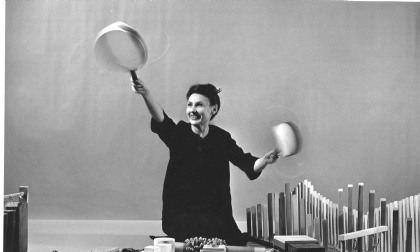 |
|
Zeit ihres Lebens stand Lucia Dlugoszewski im Schatten großer Meister der neuen Musik. Das Klangforum Wien leistet nun einen einzigartigen Beitrag zur Wiederentdeckung ihres Werkes.
Hier geht's zum Album.
|
 |
| Neuveröffentlichung |
|
Christian Muthspiel & Orjazztra Vienna |
|
 |
|
"La Melodia della Strada" ist eine musikalische Entdeckungsreise durch die phantastische Welt von Federico Fellini.
Hier geht’s zum Album. |
 |
| Neuveröffentlichung |
|
Isabel Ettenaer, Karlheinz Essl: Whatever Shall Be |
|
 |
|
10 Jahre nach der Erstveröffentlichung präsentieren wir eine erweiterte digitale Neuauflage von "Whatever Shall Be - music for toy instruments and electronics".
Hier geht’s zum Album. |
 |
| Neuveröffentlichung |
|
The Present, Ex Utero |
|
 |
|
Ex Utero ist das Debüt-Album des solistischen Vokalensembles The Present. Eine neuartige Marienvesper, die Geburt und Leben feiert. Auf dich, Maria!
Hier geht's zum Album. |
 |
| Neuveröffentlichung |
|
Ins Offene, Für Gerd Kühr |
|
 |
|
Herzlichen Glückwunsch an Gerd Kühr zum Erhalt des Österreichischen Staatspreises 2023. Das Album "Ins Offene: Für Gerd Kühr" entstand anlässlich der Emeritierung des Komponisten und Dozenten an der Kunstuni Graz. Mit Werken von Gerd Kühr, Elisabeth Harnik, Beat Furrer, Klaus Lang uvm.
Hier geht’s zum Album. |
 |
| Neuveröffentlichung |
|
Karlheinz Essl & Wolfgang Kogert, ORGANO/LOGICS |
|
 |
|
Das Album enthält die gesamten Orgelwerke von Karlheinz Essl, die zwischen 1986 und 2021 entstanden sind und von Wolfgang Kogert an der Kuhn-Orgel der Hofburgkapelle in Wien eingespielt wurden.
Hier geht's zum Album. |
 |
| Neuveröffentlichung |
|
Knoedel: Aufschnaiter:in |
|
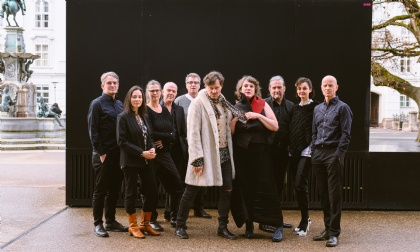 |
|
Barcok trifft auf zeitgenössischen Eigensinn. Christof Dienz und seinen Knoedel gelingt es, die ursprüngliche Nähe der Volksmusik in der Musik des Barocks aufzuzeigen.
Hier geht’s zum Album. |
 |
| Neuveröffentlichung |
|
Les Espaces Électroacoustiques III |
|
 |
|
Das Abenteuer geht weiter! Nach den erfolgreichen Veröffentlichungen von Les Espaces Électroacoustiques I und Les Espaces Électroacoustiques II (Jahrespreis der deutschan Schallplatenkritik 2020) präsentieren col legno und das Institute for Computer Music and Sound Technology ausgewählte Werke von 1986 bis 2007.
Hier geht's zum Album. |
 |
| Neuveröffentlichung |
|
Lukas Lauermann: Interploitation |
|
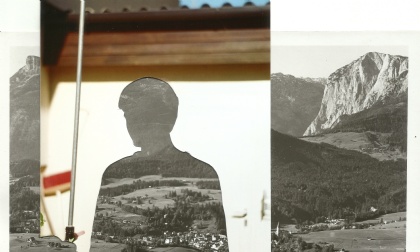 |
|
In seinem dritten Studio-Album interveniert der Cellist Lukas Lauermann in bereits bestehende Aufnahmen und formt daraus neue Instrumentalstücke.
Hier geht's zum Album. |
 |
| Neuveröffentlichung |
|
Josef Novotny & Peter Herbert: prolifics |
|
 |
|
Josef Novotny & Peter Herbert erstmals im Duo. In "prolifics" trifft Präzision auf freie Improvisation
Hier geht’s zum Album. |
 |
| Neuerscheinung |
|
Trio MIT: Breezes from here and there |
|
 |
|
Wie in der alten Tradition des Geschichtenerzählens, entführen Trio MIT die Zuhörerinnen und Zuhörer in die Weiten der Fantasie. Orient trifft auf Okzident: Musik im Zeichen der Begegnung und des kulturellen Dialoges.
Hier geht's zum Album. |
 |
| Neuveröffentlichung |
|
m o s: mnemonic |
|
 |
|
Beeinflusst von minimalistischer und improvisierter Musik verbindet m o s spontanes Zusammenspiel mit akribischen Strukturen.
Hier geht's zum Album. |
 |
| Neuveröffentlichung |
|
Franui & Nikolaus Habjan: Kreisler-Lieder |
|
 |
|
Anlässlich zum 100. Geburstag widmen Musicbanda Franui & Nikolaus Habjan dem großen Liedkomponisten und Wortakrobaten Georg Kreisler ein Album.
Hier geht's zum Album. |
 |
| Neuveröffentlichung |
|
Oliver Welter, Clara Frühstück: Winterreise |
|
 |
|
Eine erfrischende und euphorisierende Neuinterpretation des Klassikers des romantischen Liedes.
Hier geht’s zum Album. |
 |
| Neuveröffentlichung |
|
Martin Ptak | Martin Eberle: Momentum |
|
 |
|
Martin Ptak und Martin Eberle kombinieren organische Klänge alter Klaviere, Harmoniums, Combo-Orgeln mit Synthesizern und elektronisch bearbeiteten Blechblasinstrumenten.
Hier geht’s zum Album. |
 |
| Neuveröffentlichung |
|
Matthias Jakisic: Fragmente |
|
 |
|
In »Fragmente« präsentiert Matthias Jakisic zwölf Eigenkompositionen: Eine orignielle Vision, wie das Streihquartett im 21. Jahrhundert klingen könnte.
Hier geht’s zum Album. |
 |
| Neuveröffentlichung: |
|
Vélvez: I will never die |
|
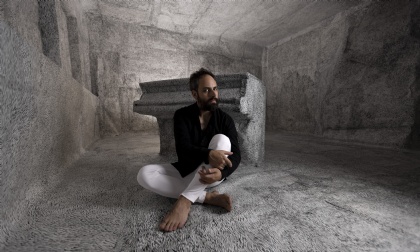 |
|
»I will never die« von Vélvez ist Musik im Zeichen des Unterwegsseins, in einem Schwebezustand zwischen Ekstase und Melancholie und der permanenten Lust, Neues zu entdecken. Hier geht’s zum Album. |
 |
| Neuveröffentlichung |
|
Wolfgang Puschnig/Pentaklang Ensemble: Present Memories |
|
 |
|
"Present Memories" von Wolfgang Puschnig und Pentaklang Ensemble ist ein subtiles, kammermusikalisch durchformuliertes Klangspiel für Holzbläserquintett.
Hier geht's zum Album |
 |
| Neuveröffentlichung |
|
Wolfgang Mitterer: Phantom |
|
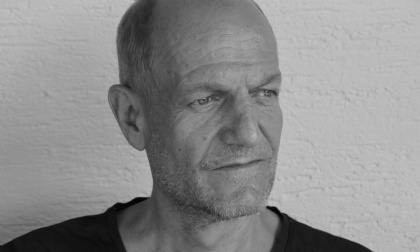 |
|
Ein Traum der zu Albtraum wird: Wolfgang Mitterers Vertonung des Stummfilmklassikers »Phantom« von Friedrich Wilhelm Murnau. Mit Phace - Ensemble für neue Musik unter der Leitung von Lars Mlekusch.
Hier geht's zum Album. |
 |
| Neuveröffentlichung |
|
Juliana Hodkinson: Angel View |
|
 |
|
Angel View ist eine Assemblage aus urbanen und musikalischen Trümmern, irgendwo zwischen wortlosem Live-Hörspiel, inszeniertem Filmsoundtrack und Instrumentaltheater.
Hier geht's zum Album |
 |
| Neuveröffentlichung |
|
Matthias Monrad Møller: The Best Version of Myself |
|
 |
|
Ein originelles Porträtalbum des Sängers und Komponisten Mathias Monrad Møller mi Solistenensemble PHØNIX16, Sebastian Berweck, Carola Schaal und The Norwegian Radio Orchestra.
Hier geht’s zum Album. |
 |
| Neuveröffentlichung |
|
Matthias Muche: Bonecrusher |
|
 |
|
Ein Posaunist, der in immer wieder neuen Begegnungen mit Fachkollegen den Fokus seiner Forschungsarbeit auf die vielfältigen Potentiale dieses Instruments richtet, das der menschlichen Stimme möglicherweise näher kommt als andere ... WDR Jazzpreisträger Matthias Muche versteht es, die Posaune in Szene zu setzen und präsentiert sein neues Album " Bonecrusher" via col legno. Hier geht’s zum Album. |
 |
| Neuveröffentlichung |
|
Hélène Pereira: Axis Mundi |
|
 |
|
Hélène Pereira hat acht Komponisten gebeten, mit einer eigene Interpretation von »Axis Mundi« aufzuwarten. Das Resultat: Musikstücke für konventionelles Klavier und live Electroncis von Isotta Trastevere, François Rossé, Philippe Festou, Jean-Claude Risset, John Cage, Mayu Hirano und Ivan Solano. Hier geht’s zum Album. |
 |
| Neuveröffentlichung |
|
Paul Frick: Hofknicks |
|
 |
|
| Abseits von Brandt Brauer Frick und jüngst Tangerine Dream, präsentiert Paul Frick sein neues Soloalbum ’Hofknicks’ via col legno. Die insgesamt 14 Stücke changieren zwischen Dub, Bass, Techno, Ambient und zeitgenössischer Klassik; Fricks Musik dringt als hybrides Farbspiel an unser Ohr... Hier geht’s zum Album. |
 |
| Neuveröffentlichung |
|
Wolfgang Mitterer: temp tracks |
|
 |
|
Wolfgang Mitterer, gefragter Musiker und Komponist aus Wien, schreibt für bedeutende Orchester, Ensembles und Opernhäuser sowie für Theater (u.a. die Musik für Salzburgs Jedermann) und Film (u.a. für Michael Glawogger). Zweimal wurde er mit dem Österrreichischen Filmmusikpreis prämiert. Hier veröffentlicht er grandiose „temp tracks“: So nennt man Musikstücke, die testweise unter eine Filmsequenz gelegt werden, bis die „richtige“ Musik kommt. Hier geht’s zum Album. |
 |
| Neuveröffentlichung |
|
VOS: Charlatan |
|
 |
|
Dunkel glänzender zeitgenössischer Jazz: das bilder- und stimmungsreiches Debütalbum des österreichischen Trios VOS! Hier geht’s zum Album. |
 |
| Neuveröffentlichung |
|
Christoph Zimpber: The Millennials Mass |
|
 |
|
| Das faszinierende Debütalbum des österreichischen Komponisten und Klarinettisten Christoph Zimper, unterstützt von hochkarätigen KünstlerInnen wie dem Eggner Trio und der Plattform K+K: jung, tiefgründig und absolut mitreißend! Hier geht’s zum Album. |
 |
| Neuveröffentlichung |
|
Xiaoyong Chen: Qian & Yan |
|
 |
|
Xiaoyong Chens Stücke sind mithin »west-östliche Reisegesellschaften«: die teils schroffen kulturellen Unterschiede, das scheinbar nicht zueinander passende Klangmaterial und Musikverständnis lässt der Komponist in einem Schmelztiegel zusammenkommen und bringt daraus faszinierend neue und eigenständige ›Mischungen‹ hervor, die immer das Resultat von ernsthafter Arbeit sind. »Wird die Kunst der Zukunft auf Tradition gegründet sein?«, fragt Chen. Und fügt ungerührt hinzu: »If so, why?« Hier geht’s zum Album. |
 |
| Neuveröffentlichung |
|
Romed Hopfgartner: Pattern & Decoration |
|
 |
|
| Farbenfroher Jazz in all seinen Formen und Möglichkeiten: das neue Album des vielseitigen österreichischen Saxophonisten Romed Hopfgartner! Hier geht’s zum Album. |
 |
| Neuveröffentlichung |
|
Lukas Ligeti: That Which Has Remained... |
|
 |
|
| Der international renommierte Schlagzeuger und Komponist Lukas Ligeti schuf ein bewegendes Musikstück zwischen Performance und Konzert, das sich auf einzigartige Weise der Geschichte der polnischen Juden erinnert. Hier geht’s zum Album. |
|
 |
| Niccolò Castiglioni |
|
Quilisma |
|
|
|
|
Zurück zur Natur! Das Bekenntnis zur neuen Einfachheit prägt Niccolò Castiglionis späte Kompositionen...  |
 |
| Karsten Riedel & Franui |
|
Fool of Love |
|
|
|
|
Karsten Riedel und Franui: die Musik der erfolgreichen Produktion »Fool of Love« am Burgtheater Wien ist jetzt bei col legno erhältlich! Unterhaltungsmusik der feinsten Art.  |
 |
| Wolfgang Mitterer |
|
massacre |
|
|
|
|
Wolfgang Mitterer präsentiert mit »massacre« eine furiose Aufarbeitung des scheinbar zeitlosen Trios Macht, Religion und Gewalt. Eine Oper für fünf Sänger, neun Instrumente und electronics.  |
 |
|
|
| Emily Stewart: Fair |
|
|
|
|
|
 |
|
|
| Franui & Florian Boesch: ALLES WIEDER GUT |
|
|
|
|
|
 |
|
|
| Coastline Paradox: Teaser |
|
|
|
|
|
 |
|
|
| SCENATET: Nice Guys Win Twice |
|
|
|
|
|
 |
|
|
| Martin Ptak: River Tales (Live) |
|
|
|
|
|
 |
|
|
| Lukas Lauermann: wir sind abgründe (ein brunnen der in den himmelschaut) |
|
|
|
|
|
 |
|
|
| Alma: Oeo (Teaser) |
|
|
|
|
|
 |
|
|
| iris electrum: of tigers and owls (no future, no past) |
|
|
|
|
|
 |
|
|
| Alma: Morocco |
|
|
|
|
|
 |
|
|
| CPSS: Bold |
|
|
|
|
|
 |
| John Cage |
|
Sonatas and Interludes |
|
|
|
|
Der amerikanische Altmeister des präparierten Klaviers versuchte sich in seinen Sonatas and Interludes gewohnt eigenwillig an musikalischen Kleinformen.  |
 |
| Morton Feldman |
|
Triadic Memories |
|
|
|
|
Der Klang als Mittelpunkt des Seins: Erwachsen aus der Stille erreicht Feldman in Triadic Memories die Grenzen des Fassbaren.  |
 |
| Marino Formenti |
|
Nothing is real |
|
|
|
|
Eine CD für die Insel! Oder zumindest für die Badewanne: Nothing is real, zusammen-gestellt und außergewöhnlich gespielt von Marino Formenti.  |
 |
| Steven Stucky |
|
| Über das Hören zeitgenössischer Musik |
|
Eine zeitlose Grundsatzrede über die Annäherung an Neue Musik und Arten der Begegnung.  |
 |
|




